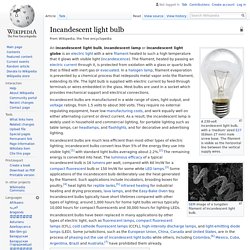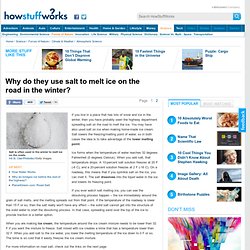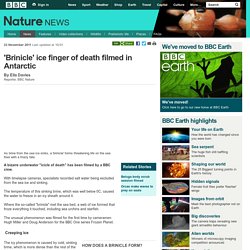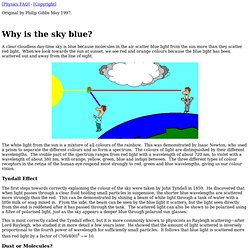

Päijännetunneli. Päijännetunnelin kartta. 1) Asikkalanselkä 2) Kalliomäen jakelupumppaamo sekä voimalaitos 3) Korpimäen pumppausasema 4) Silvolan tekojärvi Päijännetunneli on Päijänteestä Helsingin seudulle johtava raakavesitunneli[1], joka tuo vettä noin miljoonan asukkaan ja teollisuuden käyttöön. 120 kilometriä pitkänä se on maailman toiseksi pisin tunneli heti New York Cityyn vettä kuljettavan 137 kilometrin pituisen Delawaren vesitunnelin jälkeen.

Yli miljoona suomalaista saa käyttövetensä Päijännetunnelin vedestä Pääkaupunkiseudulla. Historia[muokkaa | muokkaa wikitekstiä] Tunneli rakennettiin pääkaupunkiseudun kuntien yhteistyönä, kun havaittiin että seudun omat vesivarat olivat niukat ja huonolaatuiset. Suunnittelu alkoi 1960-luvulla ja rakentaminen alkoi sitkeän suurtyöttömyyden aikaan 1972 ja se otettiin käyttöön 1982. Tekniikka[muokkaa | muokkaa wikitekstiä] Päijännetunneli kulkee 30–100 metrin syvyydellä maan pinnasta ja sen poikkipinta-ala on 16 neliömetriä. Incandescent light bulb. A 230-volt incandescent light bulb, with a 'medium' sized E27 (Edison 27 mm) male screw base.

The filament is visible as the horizontal line between the vertical supply wires. SEM image of a tungsten filament of incandescent light bulb. An incandescent light bulb, incandescent lamp or incandescent light globe is an electric light with a wire filament heated to such a high temperature that it glows with visible light (incandescence). The filament, heated by passing an electric current through it, is protected from oxidation with a glass or quartz bulb that is filled with inert gas or evacuated. TFT Central. Panel TechnologiesSimon Baker, updated 10 December 2013 Twitter: Stay up to date: @TFTCentral | Forum: Discuss this review | RSS Feed: Review Alerts Introduction One of the most important aspects of any display you can understand is the panel technology being used.

TN Film (Twisted Nematic + Film) TN Film panels are the mostly widely used in the desktop display market and have been for many years since LCD monitors became mainstream. Close up maxro of the sub-pixels in the TN screen in the DGM L- 2262Wd monitor. TN Film has always been so widely used because it is comparatively cheap to produce panels based on this technology. The other main reason for using TN Film is that it is fundamentally a responsive technology in terms of pixel latency, something which has always been a key consideration for LCD buyers. Movie playback is often hampered by 'noise' and artifacts, especially where overdrive is used.
Vertical Alignment (VA) VA technology was first developed by Fujitsu in 1996. cPVA. Why do they use salt to melt ice on the road in the winter?" If you live in a place that has lots of snow and ice in the winter, then you have probably seen the highway department spreading salt on the road to melt the ice.

You may have also used salt on ice when making home-made ice cream. Salt lowers the freezing/melting point of water, so in both cases the idea is to take advantage of the lower melting point. Ice forms when the temperature of water reaches 32 degrees Fahrenheit (0 degrees Celsius). When you add salt, that temperature drops: A 10-percent salt solution freezes at 20 F (-6 C), and a 20-percent solution freezes at 2 F (-16 C).
EFFECT OF SALT ON FREEZING WATER TEMPERATURE. Ice and Salt. Ice and Salt Name: Catherine C.

FAQ: Solutions: Why can adding salt to ice water make the ice melt slower? BBC Nature - 'Brinicle' ice finger of death filmed in Antarctic. 23 November 2011Last updated at 10:01 By Ella Davies Reporter, BBC Nature As brine from the sea ice sinks, a 'brinicle' forms threatening life on the sea floor with a frosty fate.

A bizarre underwater "icicle of death" has been filmed by a BBC crew. With timelapse cameras, specialists recorded salt water being excluded from the sea ice and sinking. Mathematics of Juggling. Usenet Physics FAQ. Version Date: August 2013 This list of answers to frequently asked questions in physics was created by Scott Chase in 1992.

Its purpose was to provide good answers to questions that had been discussed often in the sci.physics and related Internet news groups. The articles in this FAQ are based on those discussions and on information from good reference sources. They were later maintained and enlarged by Michael Weiss and Philip Gibbs. Others who have written for the FAQ are credited at the top of the items they submitted, while many more who have made smaller contributions have been thanked privately. Most of the entries that you'll find here were written in the days when the Internet was brand new. So because of their age, the FAQ entries that you'll find here have a great deal of academic credibility—but they are not always perfect and complete. Why is the sky Blue? [Physics FAQ] - [Copyright] Original by Philip Gibbs May 1997.

A clear cloudless day-time sky is blue because molecules in the air scatter blue light from the sun more than they scatter red light. When we look towards the sun at sunset, we see red and orange colours because the blue light has been scattered out and away from the line of sight. The white light from the sun is a mixture of all colours of the rainbow. This was demonstrated by Isaac Newton, who used a prism to separate the different colours and so form a spectrum. Tyndall Effect The first steps towards correctly explaining the colour of the sky were taken by John Tyndall in 1859.
This is most correctly called the Tyndall effect, but it is more commonly known to physicists as Rayleigh scattering—after Lord Rayleigh, who studied it in more detail a few years later. Dust or Molecules?